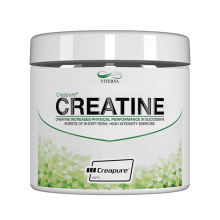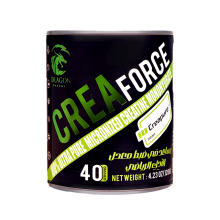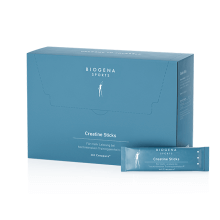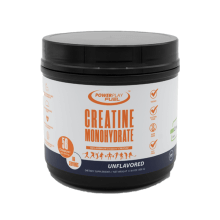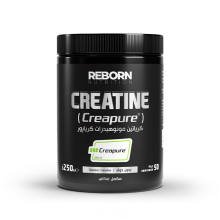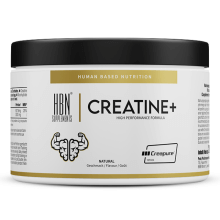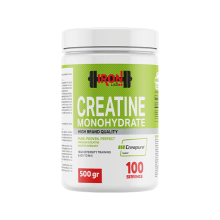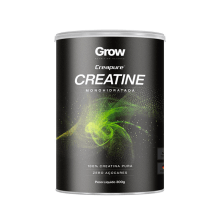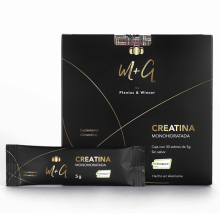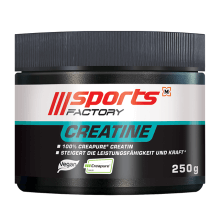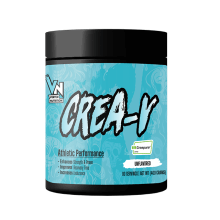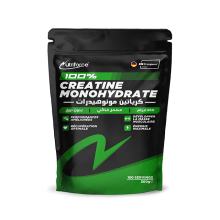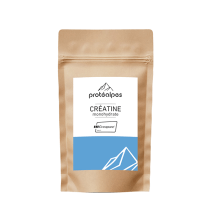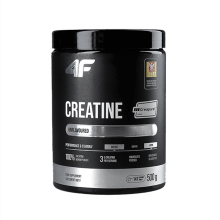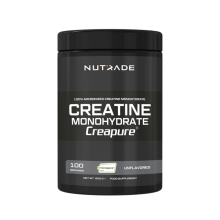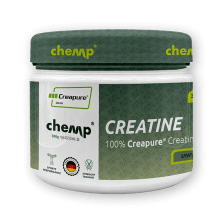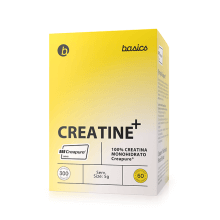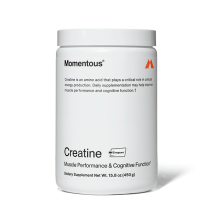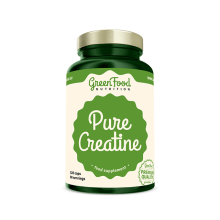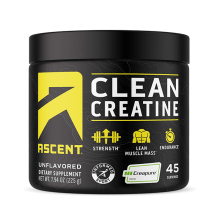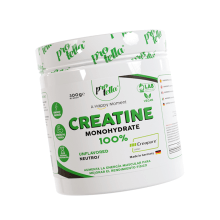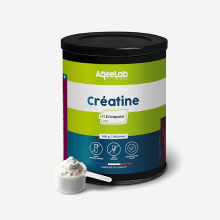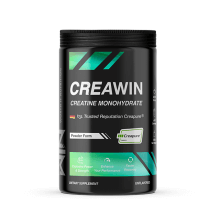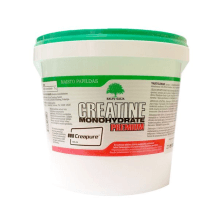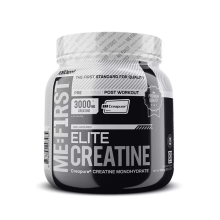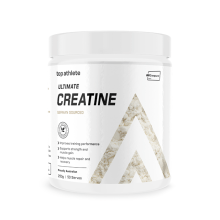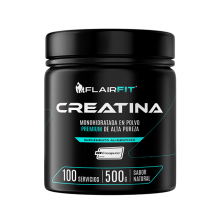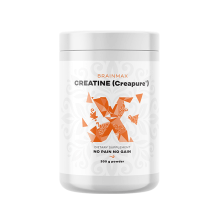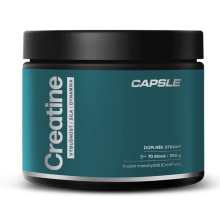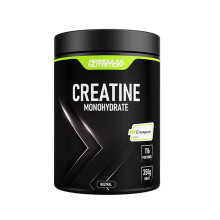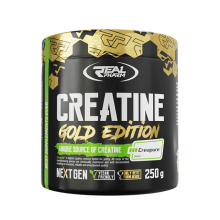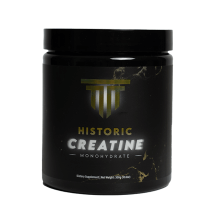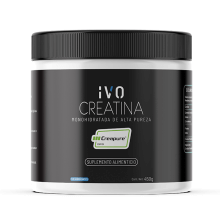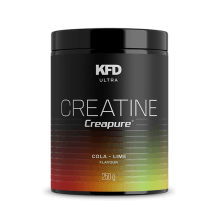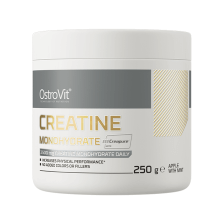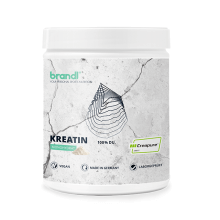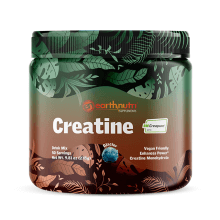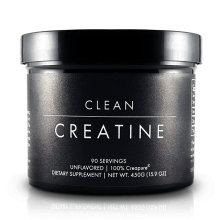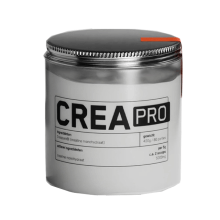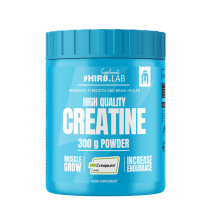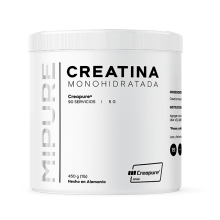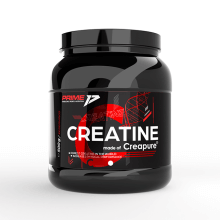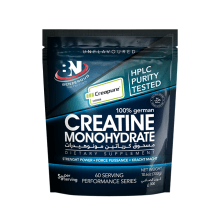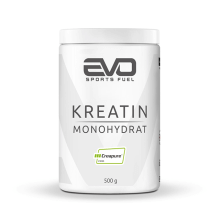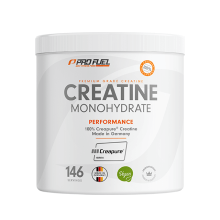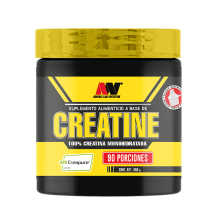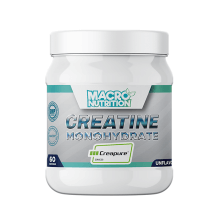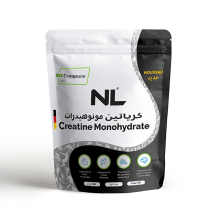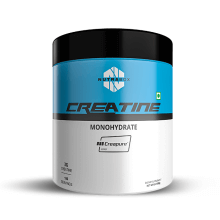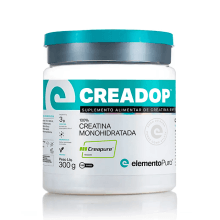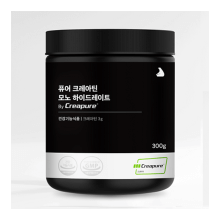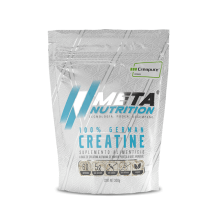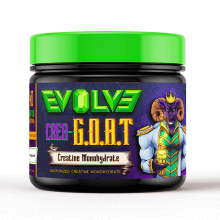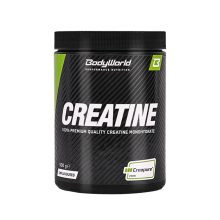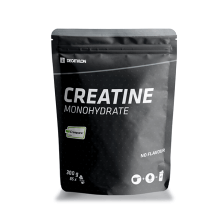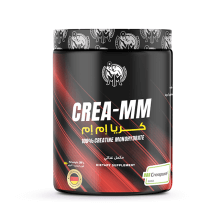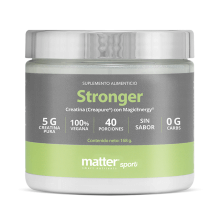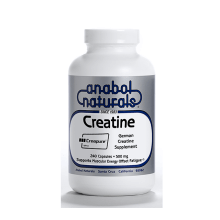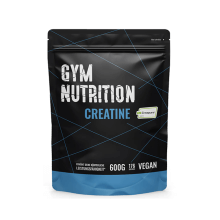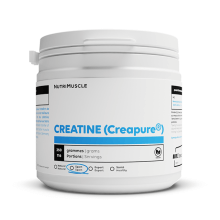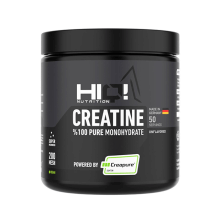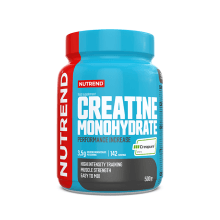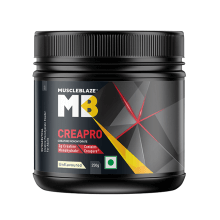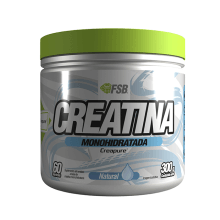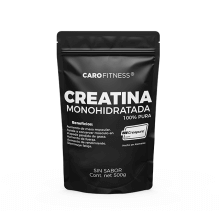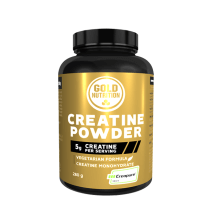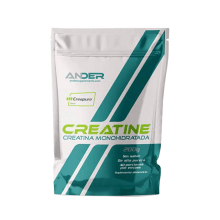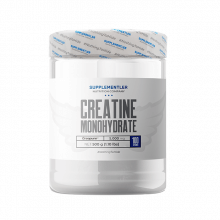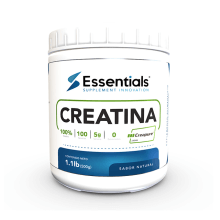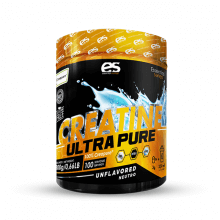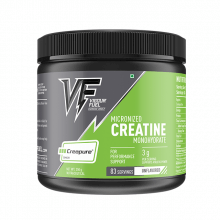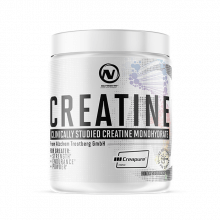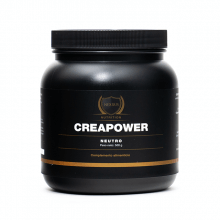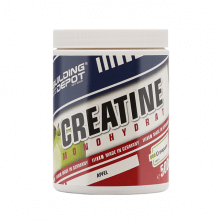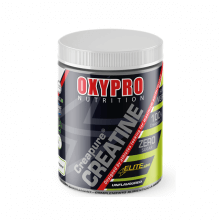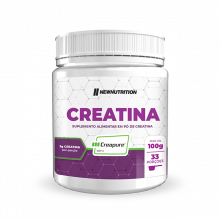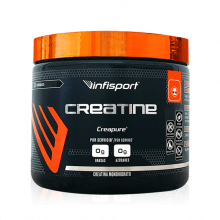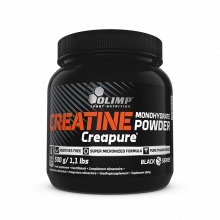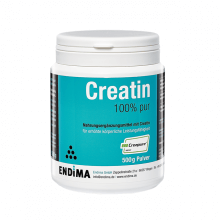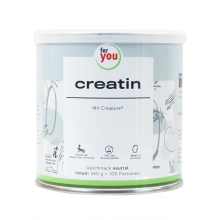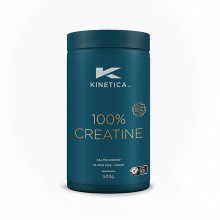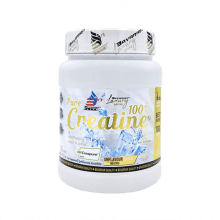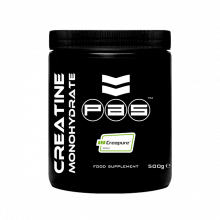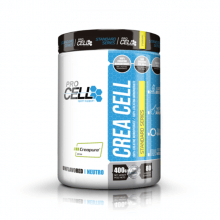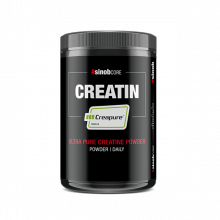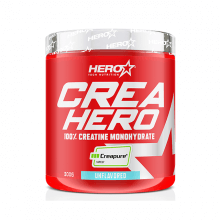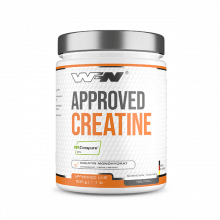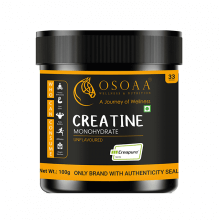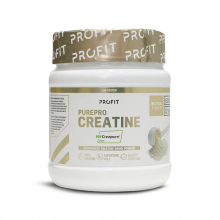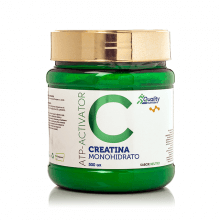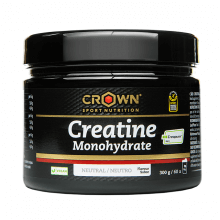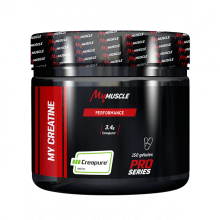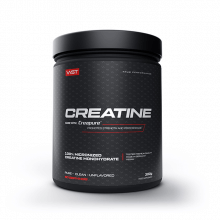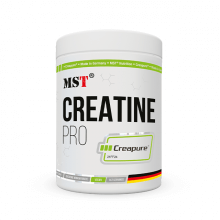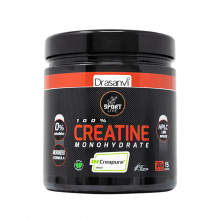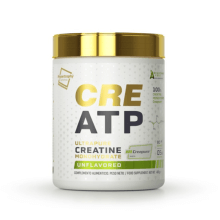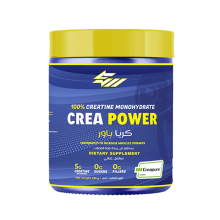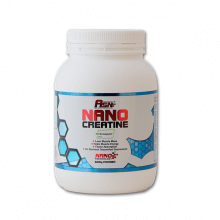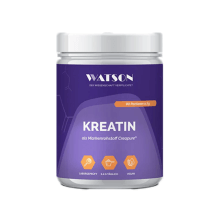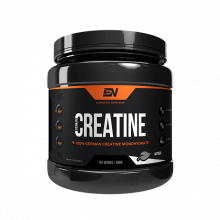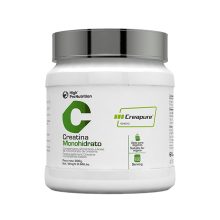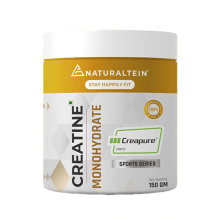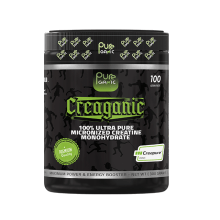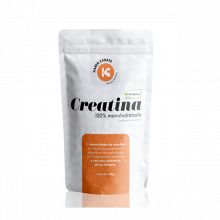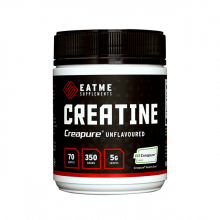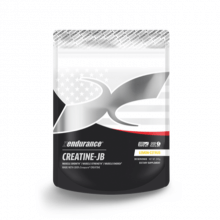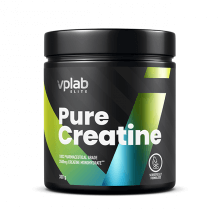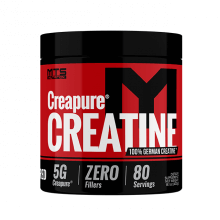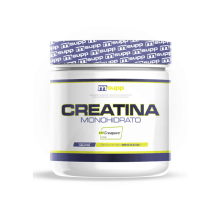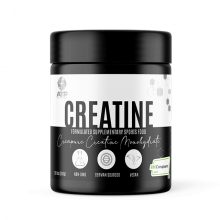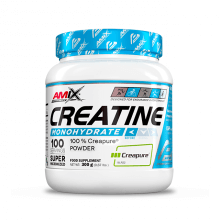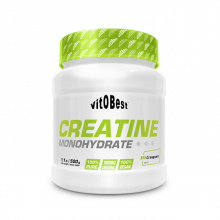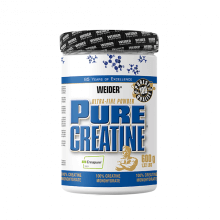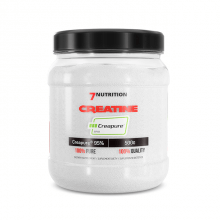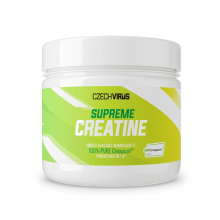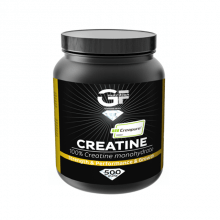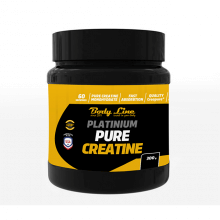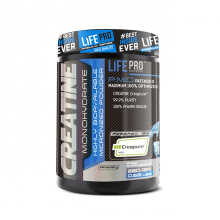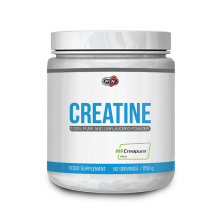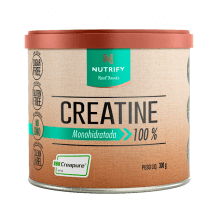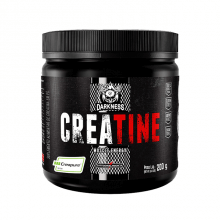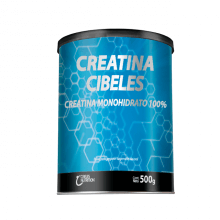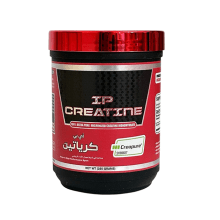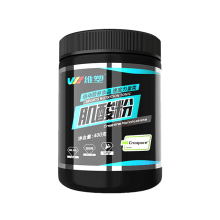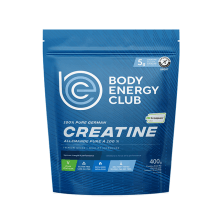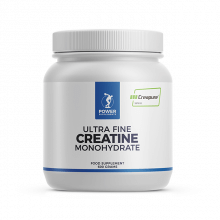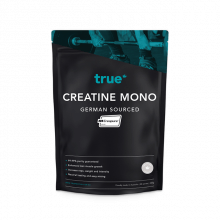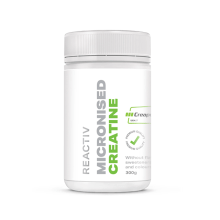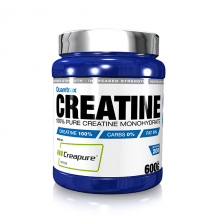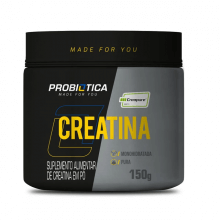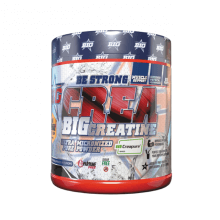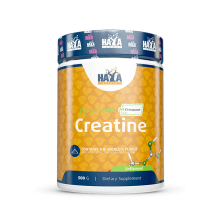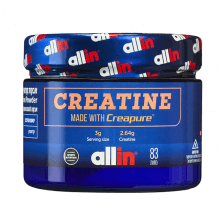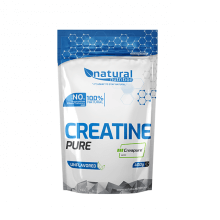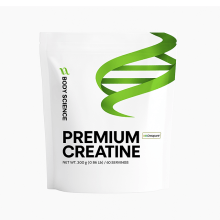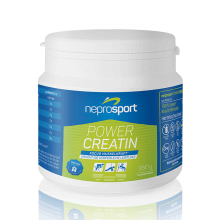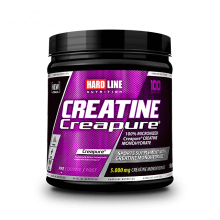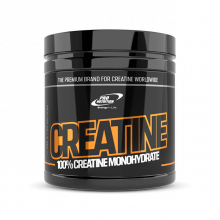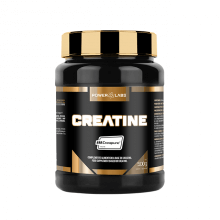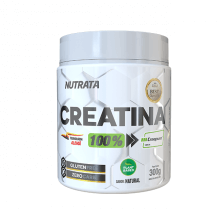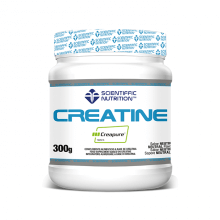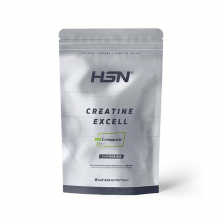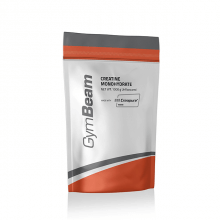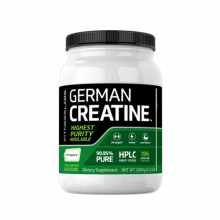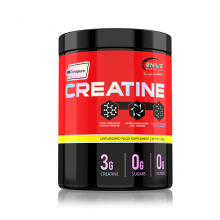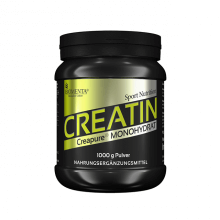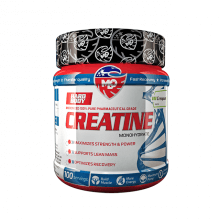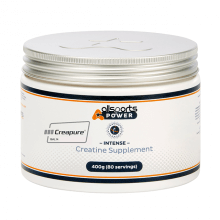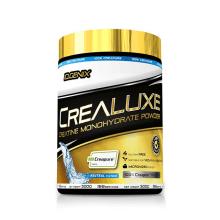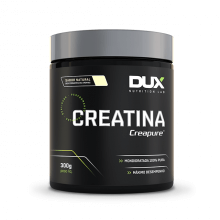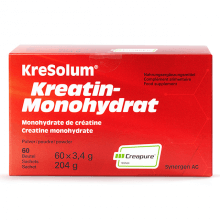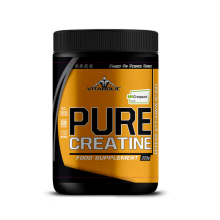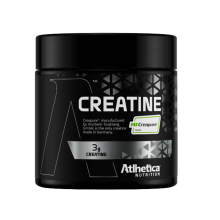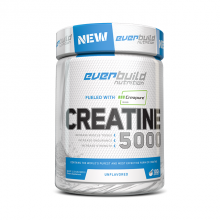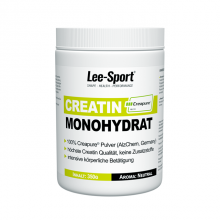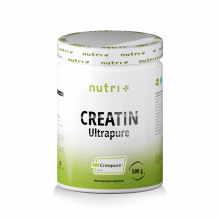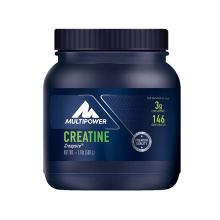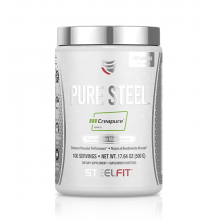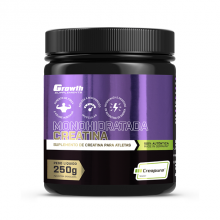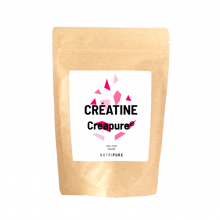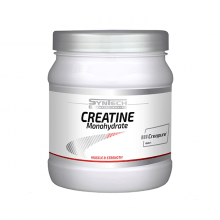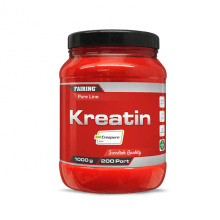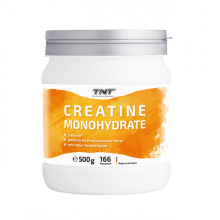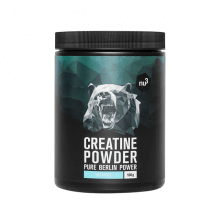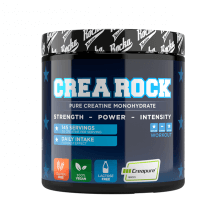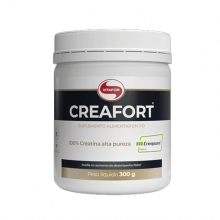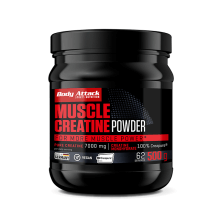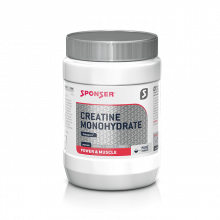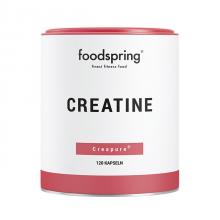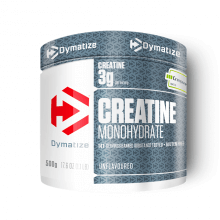Creatine: a natural energy source
Creatine is a natural substance found in the human body. It is essential to life, and the average adult has 80 - 130 grams of creatine in his or her body.
Creatine plays a vital role in transporting energy within each of the body’s trillions of cells – in skeletal muscles, the heart, brain and other organs. As well as acting as an energy carrier, creatine almost certainly has other benefits that scientists do not yet fully understand. Many researchers believe creatine is important for the function of organs including the brain, and for general health.
Scientists have studied creatine for nearly 200 years. They class creatine as a “nitrogen-containing organic acid” with the formula C4H9N3O2. In biological terms creatine is a small and fairly simple molecule.
Most people get around half of their daily creatine requirement from eating fresh meat and fish, which are practically the only dietary sources of creatine. The rest is made within the body.
Anyone who does not eat a balanced diet, especially vegetarians and vegans, may have lower than normal creatine levels.
Creatine as a dietary supplement has been scientifically proven to increase physical performance. In this role creatine has been approved by health regulatory bodies and sports agencies worldwide. It is known to be absorbed easily by the body and to have no harmful effects when properly manufactured and taken at the recommended dose.
Muscle power from creatine
Approximately 90 percent of the body’s store of creatine is found in skeletal muscle – the type of muscle we normally think of as such. All living cells need energy, and muscle cells in particular consume large amounts of energy as they work. Creatine helps to provide this energy.
Muscle cells get their energy in several different ways. During prolonged exercise, for example long-distance running, the body produces energy first by using its stores of glycogen (a form of carbohydrate) and then by burning fats. Because these processes depend on oxygen from the air they are called “aerobic”.
During short-term intensive exercise such as sprinting, however, muscles need huge amounts of energy immediately. At the start of this “anaerobic” exercise, the muscles therefore have to rely on energy stores that are available immediately. These energy stores take the form of chemical substances known as ATP (adenosine triphosphate) and phosphorylcreatine (PCr).
ATP and PCr work together to ensure that the required energy is available immediately, bridging the gap until more energy can be produced by metabolizing glucose (glycolysis), glycogen (glycogenolysis) and fat (lipolysis and fatty acid oxidation).
ATP, ADP and creatine
ATP (adenosine triphosphate) is the energy currency for all biological processes – and it is backed up by creatine.
A molecule of ATP has three chemical groups called phosphoryl groups attached to a central framework. Losing one of the phosphoryl groups converts ATP to adenosine diphosphate (ADP) and releases energy to power the cell.
The body eventually turns ADP back into ATP using energy derived from food, but this takes time, and muscle cells can store only enough ATP to allow a few seconds of high-intensity work. For more sustained exercise they need a faster way to regenerate their ATP, and this is where creatine comes in.
When muscles are resting, approximately two-thirds of their creatine exists in an energetically charged form known as phosphorylcreatine (PCr). Each PCr molecule is a creatine molecule with an added phosphoryl group. Before hard-working muscles run short of ATP, an enzyme called creatine kinase (CK) strips the phosphoryl group from a PCr molecule and transfers it to an ADP molecule, converting ADP back into ATP. Since CK is one of the fastest enzymes in nature, this ATP regeneration process is very efficient and keeps ATP levels high for some seconds. Only after approximately 80 percent of the PCr pool has been used up do ATP levels start to drop.
This allows the muscles to keep on working anaerobically until the supply of PCr runs short. Once the muscles are resting again, the phosphoryl group that was taken from PCr to regenerate ATP is added back to creatine, turning it back into PCr. Once the PCr “pool” has returned to its previous level, it is ready to provide ATP during the next bout of exercise.
Creatine from food
Creatine itself breaks down slowly in the body over time (see the section on metabolism). To balance this natural loss, an average adult needs to replace creatine at a rate of around 2 - 3 grams per day.
Just like human muscle, meat and fish contain creatine. Anyone who eats a balanced diet typically gets around half their creatine requirements directly from these food sources; the rest is made within the body (see the section on synthesis).
The table below shows the average amounts of creatine found in various raw foods:
Creatine content of various raw foods (g/kg)
Meat 3 - 7
Fish 3 - 7
Milk 0.1
Vegetables, grains and pulses 0
Cooking destroys some of the creatine content in fish and meat.
People who do not eat a balanced diet may have lower levels of creatine in their bodies. This is especially true for vegetarians and vegans who get little or no creatine directly from their diet. Thus, anyone who does not get enough creatine in their diet may benefit from taking extra creatine as a dietary supplement. This applies especially to people who feel they do not eat enough meat or fish, or who need extra creatine to build muscle, and ensure faster and more complete recovery as part of a training regime.
How the body makes creatine
The body synthesizes creatine from the amino acids glycine, arginine and methionine, which in turn come from food.
The first step of the synthesis takes place in the kidneys and pancreas. Two amino acids, arginine and glycine, are joined together by the enzyme known as AGAT to produce guanidine acetate (GA). GA is then taken up by the liver, where it is converted to creatine with the help of another enzyme, GAMT, and a form of another amino acid, methionine. Creatine is then transported out of the liver and taken up by the target organs, including skeletal muscle, the heart and the brain. This part of the process requires a specific creatine transporter (CrT) to move creatine into the cells.
A typical 70-kg man in his twenties or thirties synthesizes approximately 1 gram/day of creatine; this figure falls with age. For women, the figures are somewhat lower than those for men.
Of the three critical amino acids needed to synthesize creatine within the body, glycine is normally plentiful. Arginine and especially methionine are in shorter supply, however. Synthesizing 1 gram of creatine requires nearly 40 percent of an average person’s daily methionine intake. As a result, people whose diet is low in sources of methionine may have low creatine levels.
Bioavailability and creatine balance
The body of an average adult person typically contains 80 - 130 grams of creatine and phosphorylcreatine, stored mostly in the muscles. When this creatine is used to buffer and transport energy within the cell in the form of PCr, almost all of it is recycled through continuous conversion to phosphorylcreatine and back to creatine again.
However, each day roughly 2 - 3 grams of creatine are lost from this reserve through the breakdown of creatine to a substance called creatinine. The loss is made up from creatine in the diet (roughly 1 - 2 gram/day for non-vegetarians) and creatine synthesized by the body (roughly 1 gram/day).
Creatine has high bioavailability: when creatine monohydrate is taken as a dietary supplement, measurements confirm that, depending on the dosage, more than 95 percent can end up in the bloodstream. Creatine levels in the blood typically peak around one to two hours after creatine reaches the stomach.
People whose diet contains low levels of creatine have been shown on average to have lower creatine levels in their bodies. People who take creatine as a supplement, on the other hand, generally have higher creatine levels. Creatine supplementation eventually causes the levels of creatine in tissue to reach a maximum that it is not possible to exceed. It therefore does not make sense to take high doses of creatine for prolonged periods of time.
The actual amount of creatine stored in the body reflects a balance between the natural rate of creatine breakdown and the rate at which creatine is synthesized in the body and absorbed from the diet. Since the creatine store is large compared to the average daily rates of intake and loss, however, it changes only slowly in response to changes in creatine intake. When creatine is taken as a supplement at the recommended dose of 3 - 5 grams per day, creatine levels in the body take three or four weeks to build up to their maximum.
Metabolism, creatine and creatinine
Some creatine is always being lost from the body as creatine breaks down naturally to a substance called creatinine. Creatinine travels from cells into the blood, from where the kidneys excrete it in urine. Scientists estimate that each day an average adult loses around 1 - 2 percent of his or her creatine reserve by this route. The loss is made up by creatine absorbed from the diet and synthesized in the body.
If someone takes in more creatine than their body needs, most of the surplus is excreted into the urine. However, higher levels of creatine in the body also mean that the rate of breakdown to creatinine increases. More creatine therefore breaks down to creatinine, and the concentration of creatinine in blood and urine may rise somewhat. For the same reason, someone with a large amount of muscle mass may show raised creatinine levels compared to someone with less muscle mass. This is not a cause for concern, because the higher creatinine levels are within normal limits, and creatinine in any case has not been shown to be harmful.
Since doctors measure blood creatinine levels as a routine test for kidney disease, however, anyone undergoing kidney function tests should tell their doctor if they take creatine as a supplement. Elevated creatinine levels that result simply from taking creatine as a supplement are usually not a problem.
To be on the safe side, someone who has pre-existing kidney disease or is at risk of developing it (through diabetes or high blood pressure, for example) should also consult a doctor before taking creatine as a supplement.
Creatine in sport
Through its role in helping to transport energy in the form of phosphorylcreatine within cells, creatine is a natural choice as a dietary supplement for sportspeople. Taking extra creatine increases the reserves of phosphorylcreatine in the muscles. This in turn improves performance and aids recovery in both training and competition.
In the gym, creatine is popular because it allows athletes to train harder and so to add muscle mass faster. Without training, creatine on its own does not create muscle mass. This is quite different from the action of banned substances such as steroids.
Since the 1990s many athletes and scientists have come to see creatine as the most effective nutritional supplement for enhancing exercise tolerance, muscle strength and lean body mass. For resistance training, creatine supplementation has consistently been shown to increase both strength and number of repetitions.
These benefits in training translate to any sports that require bursts of intense muscle power. Sports players and athletes in many disciplines – including competitive cycling, sprinting, swimming and football – have taken creatine for many years with excellent results.
Creatine in the body’s natural form, creatine monohydrate, is established as proven, effective, safe and legal. The European Food Safety Authority (EFSA), for instance, agrees that creatine can increase physical performance during short-term, high-intensity, repeated bouts of exercise. This is now laid down in article 13.1 of the EC Regulation on Nutrition and Health Claims. There is also evidence to suggest that creatine aids recovery from intense exercise.
Creatine’s wider role
Creatine’s importance as an energy buffer and energy carrier in muscles is by no means the end of the story. Over the last two decades, researchers have discovered that creatine plays other important roles both in muscles and in other types of tissues and cells.
For example, creatine is believed to prevent ADP levels in the cell-liquid becoming too high and in the mitochondria decreasing too much, so it controls the ratio of ADP to ATP. This is important for oxidative energy generation within the mitochondria, the “power plants” inside the cells, and indeed may well be one of the most important functions of creatine in cellular energy metabolism. Creatine is also responsible for energy transfer from the mitochondria to the intracellular fluid – a process that is surprisingly complicated and depends on the existence of several different forms of the creatine kinase enzyme.
Creatine is known to act as an antioxidant that reduces cell damage by oxygen radicals. In addition, creatine helps to buffer the cellular pH (acidity). This is most important during intense exercise, when the intracellular fluid tends to acidify. It also plays a part in balancing the various aerobic and anaerobic energy sources available to cells, including glycolysis.
As a result of basic research, many reputable researchers tend to believe that creatine is important in maintaining general health – in muscles, bones, brain and the rest of the nervous system – especially among older people.
Creatine is certainly essential for health, as is shown by the fact that children born without the ability to make or use creatine in their bodies have serious mental and physical disabilities.
Creatine has been shown to be clinically effective for a number of muscle diseases. Although it is not curative per se, as an adjuvant therapy it can delay the onset and progression, for example, of muscular dystrophy. Creatine is now being tested in long-term clinical trials as a treatment for Parkinson’s and Alzheimer’s diseases, for multiple sclerosis (MS), ALS and others.
Creatine monohydrate, salts and mixtures
Creatine for use as a supplement is available in several chemical forms. The basic creatine molecule is always similar, but the chemical groups attached to it can vary.
The natural “standard” form of creatine, which is present in the human body, is creatine monohydrate. This form of creatine, widely used as a supplement, has been and still is the one most widely studied by researchers.
Creatine monohydrate as a powder is stable during storage, effective, safe, and easily absorbed by the body. It is the form of creatine that is typically recognized by regulatory authorities worldwide. For instance, the European Food Safety Authority’s opinion on creatine refers specifically to creatine monohydrate.
So far, peer-reviewed research has not revealed any other form of creatine that is more effective than creatine monohydrate.
Creatine monohydrate does not dissolve very well in water or other drinks, so some people prefer to take more soluble forms of creatine such as creatine citrate.
Weight for weight, these other soluble forms of creatine contain less creatine than creatine monohydrate does. For example, creatine monohydrate is 88 percent pure creatine by weight, whereas other forms of creatine may contain as less as 40 percent.
“Alkaline creatine” is another form of creatine that is claimed to be more stable than creatine monohydrate in stomach acid. The latest research on alkaline creatine shows that it is no more effective than creatine monohydrate, however.
Other forms of creatine
Apart from creatine monohydrate and related forms with improved solubility, other forms of creatine supplements are available. These have been studied much less than creatine monohydrate, and in many countries they are not legally approved. They are usually more expensive than monohydrate.
There is little scientific evidence to support the idea that novel forms of creatine work better than creatine monohydrate in any way. Some of them are not as effective as creatine monohydrate, in fact, because the core creatine molecule is modified so that it operates in different, and sometimes unknown, ways.
One example is creatine ethyl ester (CEE), in which the creatine molecule is held by covalent chemical bonds, as opposed to the ionic bonds that characterize soluble creatine salts. Whereas creatine monohydrate is known to be absorbed efficiently by the body, there is good scientific evidence that in the stomach and intestines CEE quickly degrades to useless creatinine.
Stability of creatine monohydrate
Stored as a dry powder, creatine monohydrate remains stable for years. When mixed with liquids, however, creatine monohydrate slowly breaks down to form creatinine, which is physiologically ineffective, albeit not harmful.
In mild acids such as orange juice, creatine monohydrate shows less than 5 percent degradation after eight hours, so it is fine to mix creatine monohydrate into drinks as long as these are consumed the same day. In milk or yoghurt drinks, which are alkaline, creatine monohydrate can be stored for a couple of weeks in the refrigerator without degrading significantly.
It is sometimes rumored that creatine monohydrate is quickly destroyed by acid in the stomach. This is not true: research confirms that when creatine monohydrate is taken as a supplement, more than 95 percent passes unharmed through the stomach and is taken up into the bloodstream. From here it reaches the target organs – muscles, heart, brain and others – as intact creatine.
Potential side effects and safety of creatine
Creatine monohydrate is safe to take as a dietary supplement. Compared to licensed drugs, dietary supplements face even more stringent safety rules, and the European Food Safety Authority’s endorsement of creatine reflects the overwhelming scientific position that chemically pure creatine monohydrate is safe when taken at the recommended dosage.
The only documented side effect of creatine supplementation is a slight weight gain. At first this is due to increased water retention in muscle, and later to an increase in actual muscle mass – which is generally welcomed, of course, by athletes.
It is sometimes rumored that creatine can harm the kidneys, but there is no scientifically sound evidence for this. As explained in the section on metabolism, any increase in creatinine levels is not necessarily a sign of kidney failure, but may simply show that the body is disposing of surplus creatine.
Anecdotes on the Internet suggest that some people may suffer from stomach upsets or stomach cramps when using creatine. Controlled scientific studies have failed to reproduce these supposed side effects when chemically pure creatine is taken at the recommended dosage and with enough liquid.
The vast majority of the scientific studies on creatine refer to creatine monohydrate. Other forms of creatine have been studied to a much lesser extent.
As with any dietary supplement, it is important that creatine is free from contaminants. Only use creatine from a reputable source.
How much creatine to take
Although creatine is essential to life, researchers have not yet been able to say exactly how much of it the body needs to remain healthy. Everyone probably has their own requirements, so for example a person who has a demanding training regime and eats little meat may need more creatine than someone who undertakes only moderate activity and eats a considerable amount of meat.
Taking creatine monohydrate as a dietary supplement is known to boost creatine levels in the body. We can certainly say that creatine supplementation in moderate quantities has proven benefits.
The European Food Safety Authority says that creatine monohydrate is safe if taken at 3 grams per day.
In the USA, an expert panel concluded that an intake of up to 5 grams per day does not pose a risk to consumers.
Alzchem AG recommends a daily dose of 3 - 5 grams of pure creatine monohydrate.
Anyone who looks at the Internet will quickly find that some people suggest taking more than the recommended 3 - 5 grams per day of creatine. They may also start with a high dose for several days before reducing their intake.
However, high-dose regimes are unnecessary. Research shows that after three or four weeks at 3 - 5 grams per day, the body’s creatine levels are the same as they would be following a high-dose phase.
How to take creatine
Creatine monohydrate can be taken either mixed into a drink such as fruit juice, milk, tea or plain water, or in other forms such as powder, bars, capsules, or tablets. To ensure good hydration, creatine should always be taken with plenty of liquid. You do not need to dissolve the powder completely before drinking it; a loose suspension is no problem, because creatine dissolves quickly in the stomach.
Caffeine seems to make creatine less effective, so you should avoid taking creatine at the same time as caffeine. Both substances are metabolized rapidly, so a time lag of an hour or two between creatine and caffeine is fine.
There is some evidence that taking creatine with carbohydrates and/or protein yields synergistic effects that boost the amount of creatine available to the muscles.
Most athletes prefer to take their creatine either less than an hour before training, or immediately after a workout. If you are not using creatine as a training aid, the time of day is not important.



